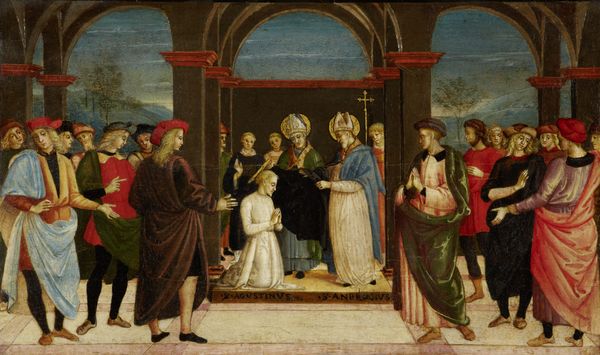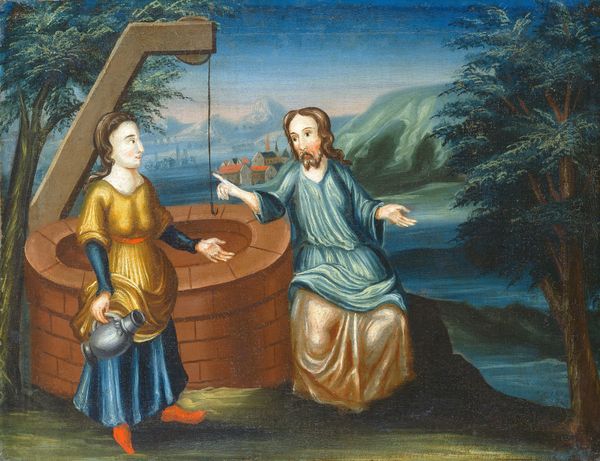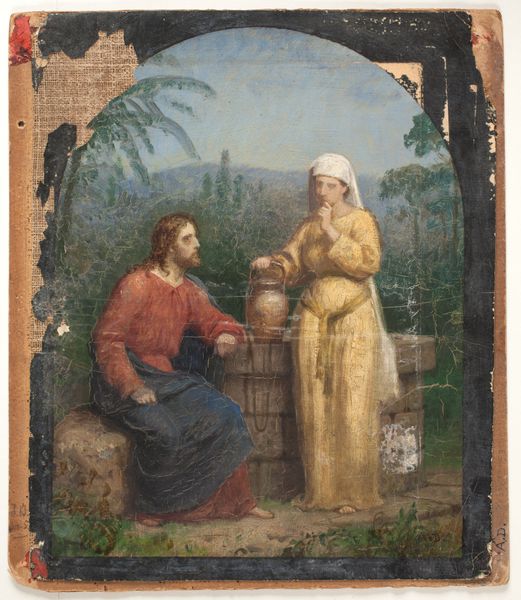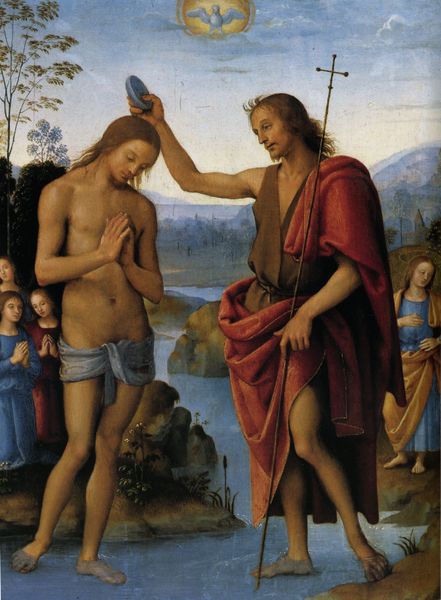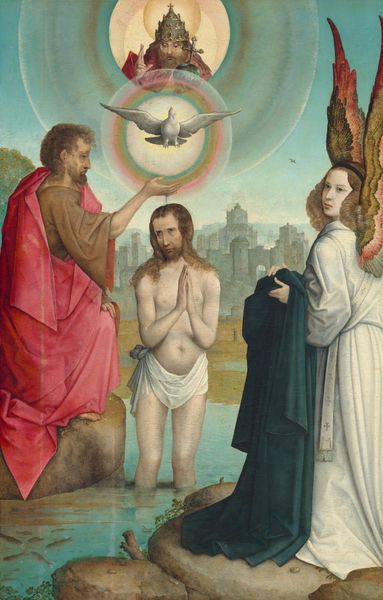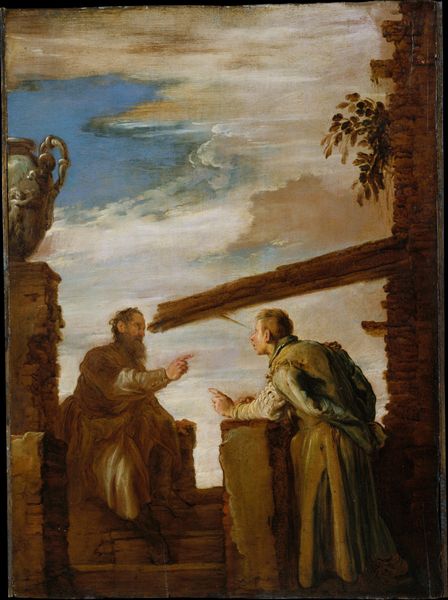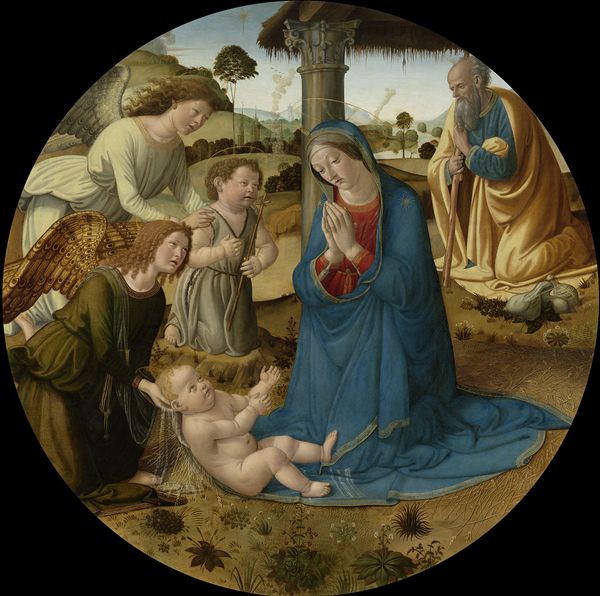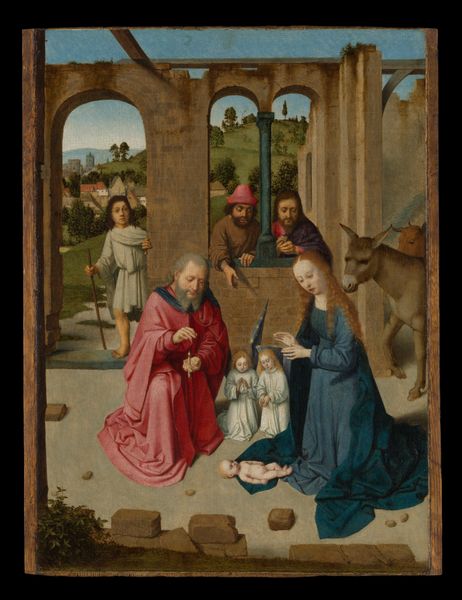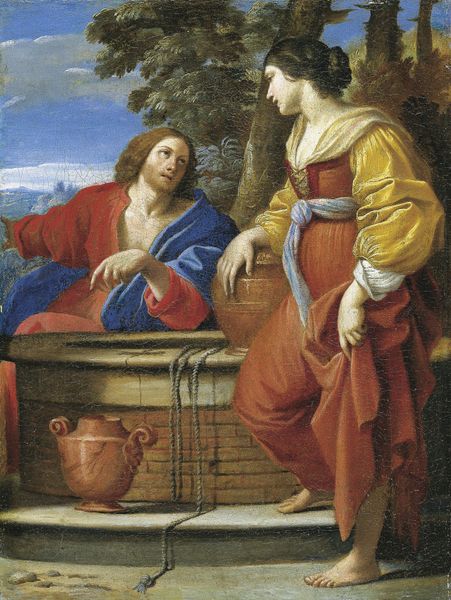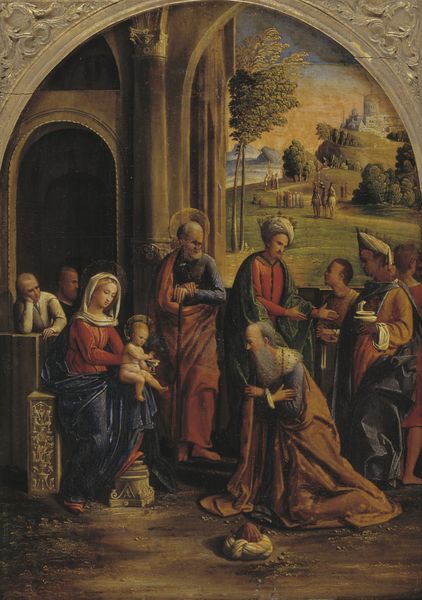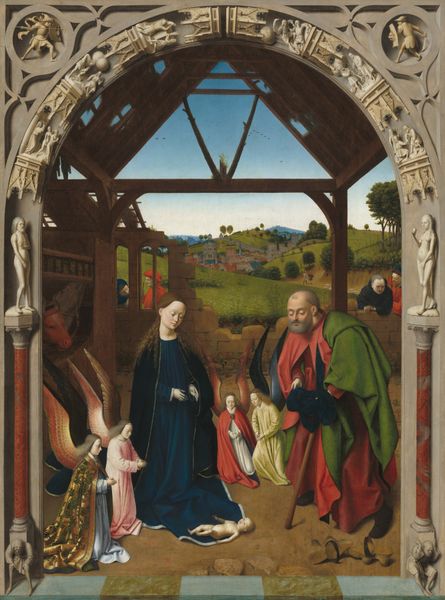
oil-paint
#
oil-paint
#
landscape
#
figuration
#
oil painting
#
history-painting
#
italian-renaissance
Dimensions: painted surface: 21 x 15.5 cm (8 1/4 x 6 1/8 in.) overall (panel): 21.3 x 16 cm (8 3/8 x 6 5/16 in.) framed: 25.4 x 20.3 cm (10 x 8 in.)
Copyright: National Gallery of Art: CC0 1.0
Curator: My goodness, it feels like stepping into a dream. There's something almost… otherworldly about the light in this painting. Editor: Indeed. This is Juan de Flandes’s “The Temptation of Christ,” made with oil paint sometime around 1500 and 1504. It's a fascinating piece of the Italian Renaissance. The use of landscape to frame the scene is rather innovative for the time. Curator: Landscape, yes, but also a stage! Look at the theatrical gestures. Christ sitting serenely as if aware he is unmoved by such base requests, the devil almost a caricature... are those goat horns? It makes me wonder, did de Flandes believe such crude demonstrations were needed to sway true divinity? Editor: The 'goat horns' point to a fascinating element of visual culture at the time. How do you portray something that has never been seen, like evil itself? By linking back to ancient, pagan imagery: half-man, half-beast. Makes a mockery, even. Remember the Church played a heavy role in shaping how the masses visually understood abstract theological concepts, which is a great deal of cultural influence and control. Curator: So the grotesque elements aren’t necessarily de Flandes’s commentary but rather, his visual toolkit! Fascinating. The way that backdrop sort of fades away… it’s like the drama unfolding takes precedence. The colors are muted, not the vibrancy you might expect in a religious scene, as if the story needs no extra pomp and circumstance. Editor: You know, speaking of "pomp and circumstance," it's crucial to realize that commissions during the Renaissance served multiple purposes beyond pious representation. This image likely reinforced societal values and religious teachings, supporting existing hierarchies and power structures within both the church and aristocratic society. How artists navigated those dynamics informs our understanding of their output. Curator: In essence, art functioned as both a mirror and a projector, shaping perceptions and validating societal norms… but looking beyond politics. De Flandes seems to whisper that the true battles, temptations, aren’t some grandiose displays of worldly power, but more quiet, intimate wrestles. He has successfully turned it inward, towards a personal, more thoughtful journey, not unlike our own experiences. Editor: That's well said, to me this painting speaks not only of religious history, but on art’s integral role as a silent yet potent voice shaping beliefs, cultures and actions in early society.
Comments
No comments
Be the first to comment and join the conversation on the ultimate creative platform.

